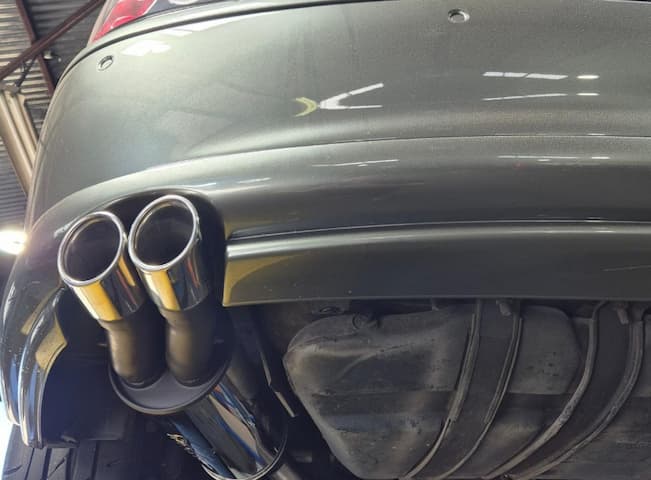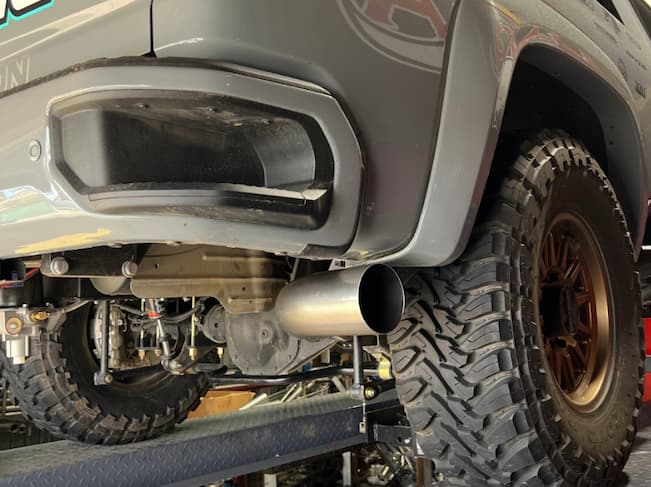Ask any stalwart high performance car buff and they’ll tell you: when the search is on for where to squeeze some extra power out of an engine, the first place owners needs to look at is their exhaust setup. This is especially true with the OE exhausts on many of today’s most popular sports cars. Most are set up more for economy and drivability than they are for the pleasure of pure performance. That places the emphasis squarely on the aftermarket to develop exhaust systems that deliver the best of both worlds.
The fact, however, is that not all aftermarket exhausts are the same. Some are more efficient at exhaust gas evacuation than others. That’s why buffs who are looking to invest in an aftermarket system need to know what to look for in order to make the right choice.
High Performance Exhaust Systems Build to Withstand Australia

Let’s be honest: for an inexperienced buyer, choosing the right exhaust can be as much of a science as learning how to design one. Fortunately though, finding a premium manufacturer that can produce a high quality, high performance exhaust system that’s built for Australia is an incredibly straightforward process.
There are a host of variables that can impact both how a system is manufactured and the selection criteria that a buyer needs to apply when shopping. Top quality manufacturers, however, are experts at steering buyers through the most obvious purchasing pitfalls, especially when it comes to understanding exactly what an aftermarket exhaust system is capable of delivering.
Perhaps the most important thing for any prospective high performance exhaust system buyer to keep in mind is that exhaust systems alone don’t produce power, per se. Instead, high performance exhaust setups excel at creating conditions that allow engines to produce more power, which include:
- Ramping up exhaust scavenging. Scavenging utilises the vacuum created by hot exhaust gases moving from high pressure to low pressure to aide in rapidly drawing the next charges of fresh air into the combustion chambers.
- Increasing exhaust gas velocity. Exhaust cylinder timing and ultimately the velocity that spent exhaust gases are moved out of the exhaust system, are crucial for both scavenging and for minimising backpressure.
- Reducing power robbing backpressure. Backpressure is the unwanted buildup of spent exhaust gases within the system, caused either by unintentional restrictions inside the exhaust tubing or as a result of poor exhaust scavenging.
Premium aftermarket exhaust system manufacturers know that for an exhaust system to increase engine output, just increasing the size of the tubing isn’t nearly enough. A properly designed system has to decisively address all of the above points, regardless of environmental factors like extreme ambient temperatures and high barometric pressures – conditions that are fairly common in Australia. Invariably, this means that prospective buyers should know which design characteristics to look for to be sure they’re getting the best system available.
Core Qualities That Make Exhaust Systems Perform
In spite of their hypnotic visuals and throaty grumble, high performance exhaust upgrades are as much about increasing an engine’s overall efficiency as they are about output and aesthetics. And regardless of whether they’re purchasing a high performance exhaust online or in person, prospective buyers need to be aware of which qualities are going to deliver the best performance across the board.
From intricately blueprinted headers and collectors, to custom-tuned cats and mufflers, properly designed high performance exhaust systems are engineered to increase exhaust flow while reducing restrictions. Buyers therefore want to focus on manufacturers whose high performance exhaust systems and components are built around the following:
- Mandrel bent tubing. Not only does mandrel bending eliminate unwanted backpressure in curved tube sections, it also adds to the strength and structural integrity of the entire exhaust system.
- TIG welded joints and flanges. TIG welding creates clean, strong joints and flanges that aren’t prone to leaking or flexing, and are completely free from burrs and flash that could cause velocity-draining turbulence.
- Premium grade materials. Affordably priced 304 stainless steel is excellent at dissipating the excess heat that can affect scavenging, while doing a better job at resisting corrosion and heat cycling than other types of costlier, less versatile steels.
And when it comes to core capabilities like engine efficiency and ADR compliance for noise and emissions, the best designed high performance exhaust systems for cars always rise convincingly above the rest. By increasing exhaust scavenging and reducing backpressure, engines don’t have to work as hard to accelerate or to maintain a constant output. This means significantly less wear and tear on rotating engine assemblies, especially when pulling heavy loads on days when barometric pressure is high, as well as an all around reduction in fuel consumption.
Thermal Coatings Help Performance Exhausts Beat the Heat

Make no mistake: while flow dynamics and materials are rightfully the main concerns when it comes to aftermarket exhausts, they do very little to control the massive amounts of heat that’s radiated away from the system. Exhaust gas temperatures can routinely exceed 600°C immediately downstream of a turbo, with under-bonnet temperatures easily capable of climbing above 200°C on hot days. This is where the advantage of an enamel- or ceramic-coated sports exhaust for cars makes a difference.
High tech thermal coatings made from heat resistant compositions give aftermarket sports car performance exhaust systems the superior heat transfer, and heat locking properties they need to withstand the severest exhaust temperatures, with benefits that include:
- A valuable reduction in heat levels circulating throughout the engine bay;
- Increased resistance to metal fatigue or failure as a result of heat cycling; and,
- Increased protection against tubing oxidation as a result of exposure to high temperatures.
By effectively locking heat inside the system, thermally coated tubes and components help reduce the risk of heat related damages to delicate electronics and sensors, especially those used on turbo-charged vehicles. Locking in heat also aides in spent gas evacuation and scavenging, making the application of thermal compositions a crucial aspect of high performance exhaust tuning that no car buff can afford to overlook.
The Final Word
At the end of the day, with all the exhaust choices available to Australian car buffs, identifying the one that has the most to offer can be challenging. That’s because choosing a standard high performance system isn’t enough. It also has to be reliable enough to withstand the toughest climate and terrain that Australia has to throw at it.
An Australian-built high performance exhaust is going to have everything a car buff needs to reliably and compliantly boost their car’s performance. They’re an investment that’s well worth making.
























